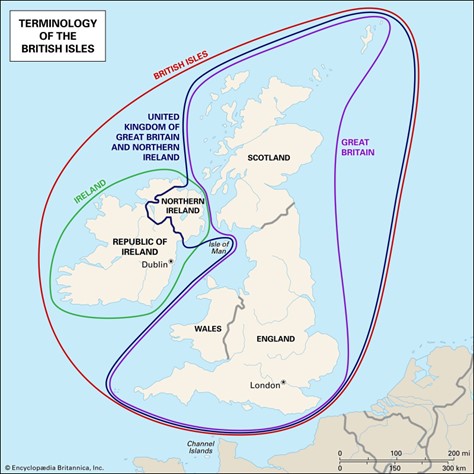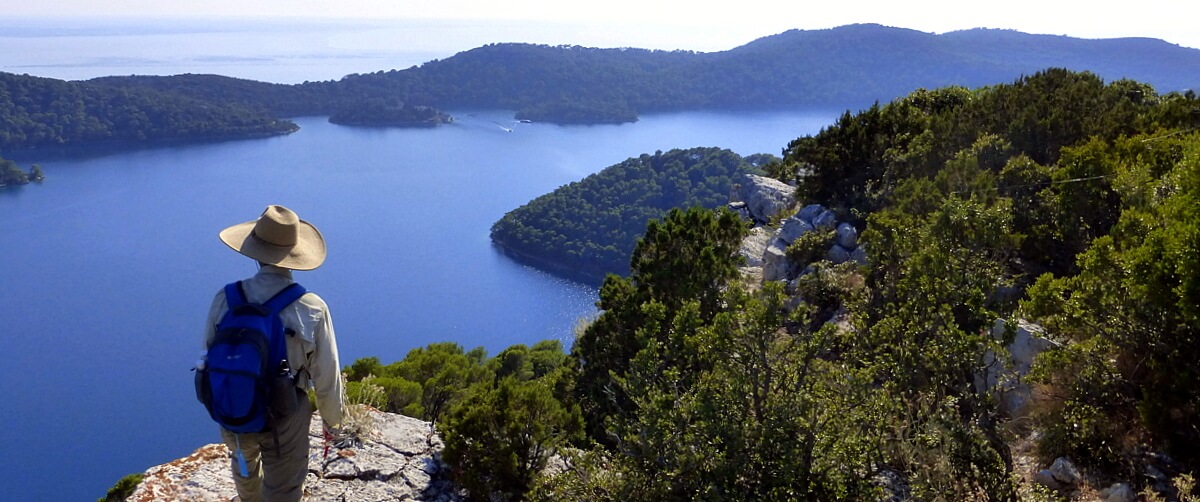September 17, 2022
by Dan Friesen
WAI is excited to offer 3 tours that visit the storied British Isles in 2023. In July, we’re in Ireland; in August, were in England & Scotland, and in September, we’re in Cornwall & Wales.
It’s easy to get confused, however, over terminology given to places in this part of the world. Have you ever wondered…
- What exactly are the “British Isles”?
- How do various names used for the geographical entities and political entities overlap?
- Is there a difference between Britain and England?
- Is Great Britain the same as the United Kingdom (UK)?
- Where do Scotland and Wales fit in?
- What about Ireland and Northern Ireland–aren’t they on a separate island?
This puzzle has many answers and, as usual, seeking them out takes us on a historical journey.
The clearest answer I found geographically comes from the following map in a helpful Encyclopedia Britannica article.
From this graphic, we can see that the main two islands of the British Isles are Great Britain (purple) and Ireland (green). We also see that the geographic island of Great Britain is made up of the political entities (countries) of England, Scotland, and Wales and that the geographic island of Ireland is divided into Northern Ireland and the Republic of Ireland.
So at least we now have the geography linked correctly to the names.
But the story that explains all of this goes back more than a couple millennia. The word “Britain” is linked to the Britons, the people group that inhabited much of England when the Romans arrived in the 1st century BC. Some scholars think they were part of the broader Celtic ethnic group that populated Ireland and much of Europe and some now believe they were indigenous to the island of Great Britain as an original people group.
Over the next few hundred years, Roman and Briton populations co-mingled. Rome fell to the Germanic tribes in the 5th century, in turn leading to the migration of Germanic populations, the Saxons, into Great Britain, the main island of the British Isles. This migration pushed the Celtic-speaking peoples into the northern and western parts of the island, modern day Scotland and Wales.
Fast forward to 1066, after Scandinavian Vikings raided throughout Europe and the British Isles and beyond. This was a big year because of the Norman Conquest of England. Vikings had settled in the Normandy region of France in the 9th century when the King of France purchased peace from the invaders by allotting them a chunk of northern France.
Normans expanded their power, and their ruler, William claimed rights to the English crown. In the year 1066, they crossed the English Channel and conquered the English part of Great Britain, an event fill with high drama (A short easy read about this history changing event is the book, 1066: The Year of the Conquest by David Howarth.).
During centuries that followed, English (Norman) kings consolidated their power and tried to conquer Celtic peoples in Wales and Scotland to unify the island. In Wales they were successful under Edward I in the 13th century, which is why English monarchs give the title, Prince of Wales, to their oldest son. In Scotland, not so much (remember Mel Gibson has William Wallace in the movie Braveheart).
Meanwhile, Norman power and wealth from England encroached on the island of Ireland gaining increasing influence and control over its Celtic residents. Finally, England declared Ireland a dependent kingdom of England and, in 1541 Henry VIII, he of the many wives, became the first king of England to also hold the title King of Ireland.
Scotland finally came into the fold when Henry VIII’s daughter, Elizabeth I (the recently deceased Elizabeth II being only the 2nd Elizabeth to reign), died without an heir. Her cousin, King James VI of Scotland, therefore became King James I of England (the guy who ordered the official King James translation of the bible), effectively uniting Scotland and England under one crown.
England and Scotland officially united as Great Britain (the purple circle on our map) in 1707 and their dual, superimposed flags became the Union Jack for which Great Britain is known today. From the image below, found on the fascinating website British Isles – Many Islands, you can see how the conjoining of the England and Scotland flags on the left combined to become the Union Jack on the right.
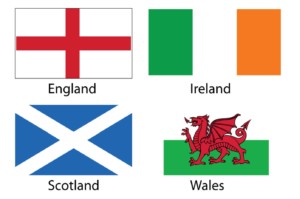
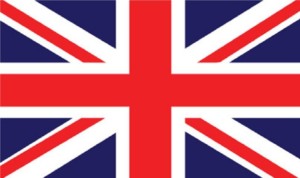
At this point, England had at least nominal control over both British Isles. Then, in 1801, the Brits used their model of political unity with Scotland to unite with Ireland, creating the United Kingdom of Great Britain and Ireland, uniting what had been two separate kingdoms under one flag: Great Britain (England, Wales, and Scotland) and Ireland. England, of course, was the dominant member of the new union of the United Kingdom.
Not everyone was thrilled with the arrangement, however, and dissent in Ireland was loud, violent, and persistent, both before and after creation of the new United Kingdom. Between 1919 and 1921, the Irish Republican Army (IRA) fight for independence resulted in the division of Ireland into northern and southern regions in 1922.
The northern region became Northern Ireland, 4th country of the United Kingdom. The southern region became the Irish Free State, still part of the British Commonwealth until 1937, when it was finally declared the sovereign nation of Ireland—the Republic of Ireland to be more precise.
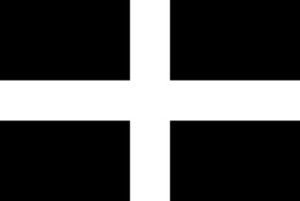
In spite of the terminology of the “United Kingdom”, nationalism is still alive on the island of Great Britain, and the evolution of the political entities in the British Isles continues. Scotland has its own constitution and parliament and continues to consider breaking away from the UK. Wales too has a parliament, or a Senedd, with a degree of autonomy. Even Cornwall, a county of England with a strong link to its Celtic past, has its own flag, with aspirations of following Wales towards more self-rule.
It will be interested to see whether the passing of Queen Elizabeth II, in general a uniting and stabilizing presence, will have an impact on the future unity of the UK.
That is as deep as we go in this article, but the threads of this discussion are broad and deep, going back hundreds of years, yet impacting the lives of today’s residents of the British Isles (Ireland and Great Britain), and today’s citizens of the countries of Ireland and the United Kingdom (Northern Ireland, Scotland, England, and Wales).
In summary, the easiest way to understand how things stand today is the colored map graphic from Encyclopedia Britannica at the beginning of the article. A picture, as they say, is still worth a thousand words.
To comment on this article, send an email to [email protected].
Further resources:
https://www.britannica.com/place/British-Isles
https://www.history.com/news/united-kingdom-scotland-northern-ireland-wales
https://blog.lingoda.com/en/britain-vs-england-differences/#What-about-Scotland,-Wales,-and-Northern-Ireland?
https://www.grunge.com/790636/great-britain-vs-england-whats-the-difference/
https://owlcation.com/stem/Irish-Blood-Genetic-Identity
https://www.aldsidu.com/post/saxons-vs-anglo-saxons-what-is-the-difference

